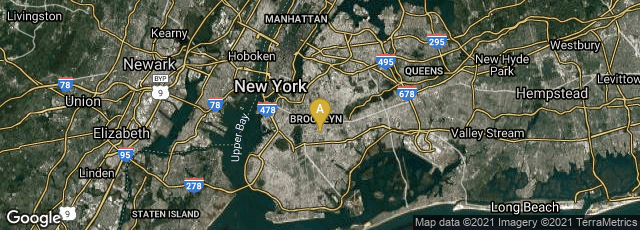

A: Brooklyn, New York, United States
In "What's a Big City Without a Newspaper?" published in The New York Times Magazine on August 9, 2009 Michael Sokelove wrote:
"Many working journalists in the country regularly check a Web site known to most as “Romenesko” (after its creator, Jim Romenesko), which aggregates industry news and these days consists mainly of layoffs and other dire news. It can be excruciating to read. Just this year, The Rocky Mountain News perished. The Seattle Post-Intelligencer became a Web-only publication with a tiny staff. Detroit’s daily newspapers are now delivered just three days a week. The Boston Globe, owned by the New York Times Company, and The San Francisco Chronicle, owned by Hearst, each went through near-death experiences as their owners won labor concessions after threatening to shutter the papers.
"Smaller newspapers, those with circulations under 50,000, are considered the healthiest part of the industry. “They’re not making 30 percent profit margins like they once did, but most of them are doing fine,” John Morton, a newspaper analyst who has followed the industry for decades, told me. Most analysts predict that the papers with a national profile and brand — The New York Times, The Washington Post, The Wall Street Journal and USA Today — will find a way to survive and stay in print. (It must be noted that few can say exactly how this will happen.)"